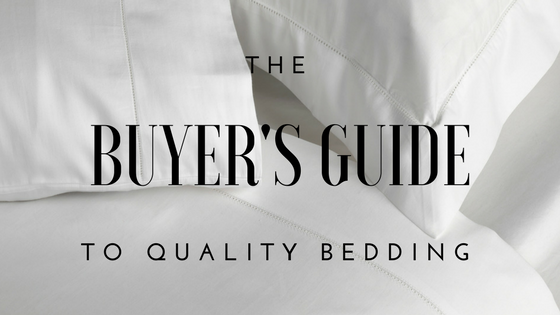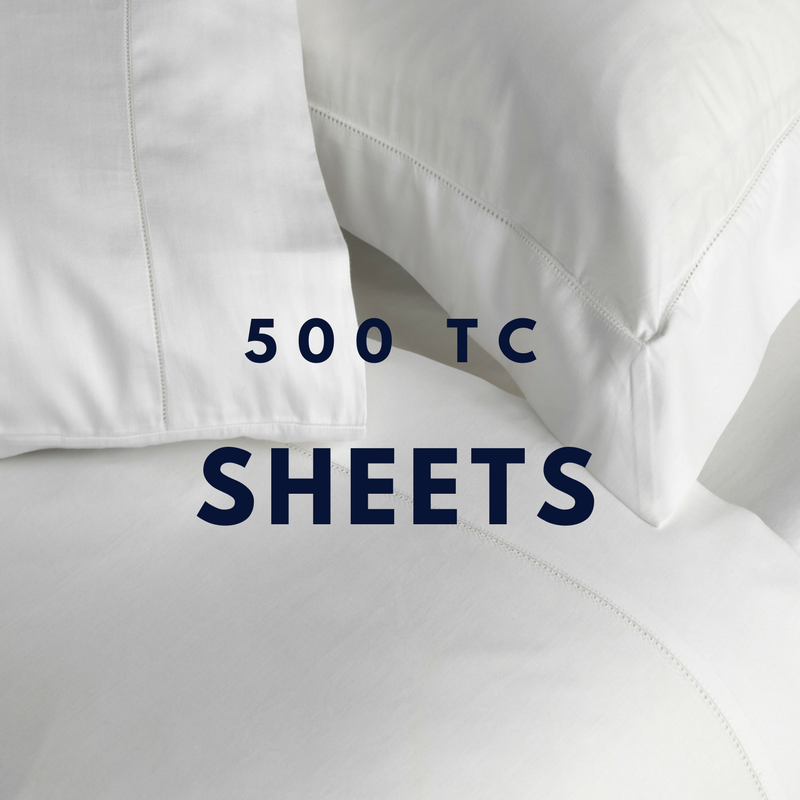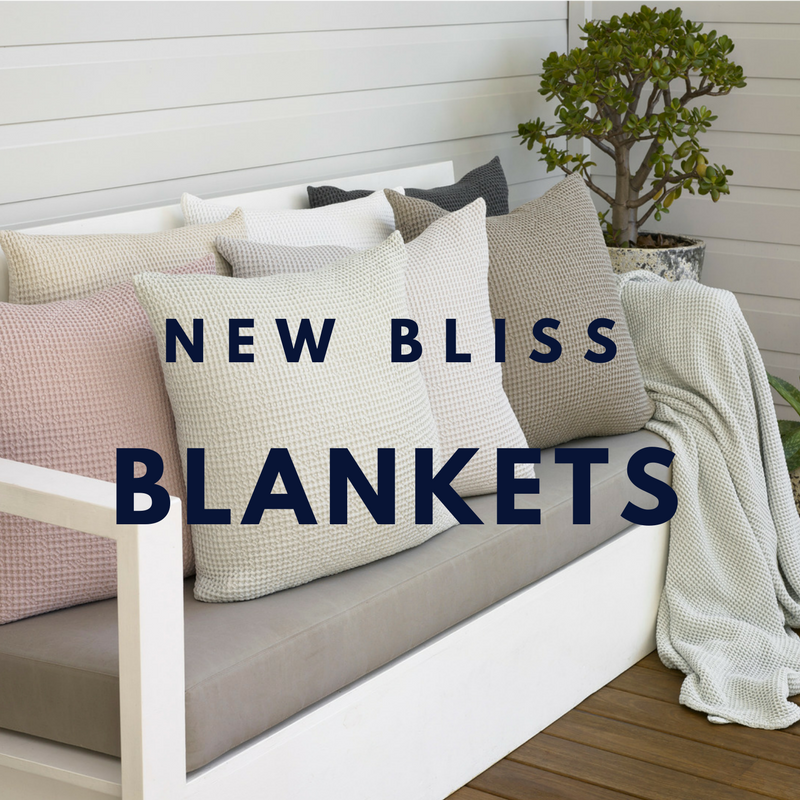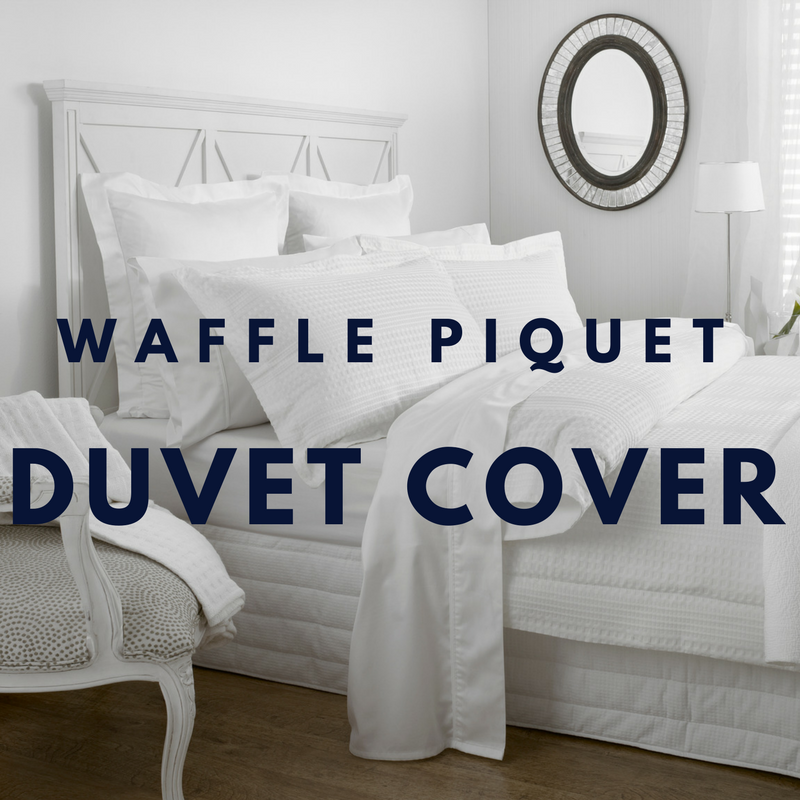Today's blog post is going to discuss the main things you should look at when you're purchasing your next bedding item, or what to keep an eye out for as you're building your top-quality bedding collection.
We spend at least one third of our lives in our beds, so it makes sense to create a luxurious haven where we can relax, refresh and rejuvenate.
It can take time to build up your bedding collection when investing in top quality bedding and sheeting, however the durability and longevity of quality bed linen is well worth the wait and ticket price. A good quality cotton or linen sheet will become softer with each wash and can last for over a decade. The benefits are two-fold: a gorgeous bedroom and a great night’s sleep.
THREAD COUNT
It’s a common misconception that the quality of bed linen can be determined by thread count. The quality of cotton is determined by length, fineness and strength of the individual fiber. Thread count is a literal measurement of the number of threads in each square inch, which indicates a denser weave as opposed to the quality of the actual cotton.
As a general guide, good quality bedding will typically have a 300-1000 thread count. However, it's worth noting that a high thread count alone doesn't truly indicate quality; fabric type should always be factored in too. For example, a 500 thread count Egyptian cotton sheet, such as Baksana's 500TC sheets, will be softer and feel more luxurious than an 800 thread count polyester-blend sheet.
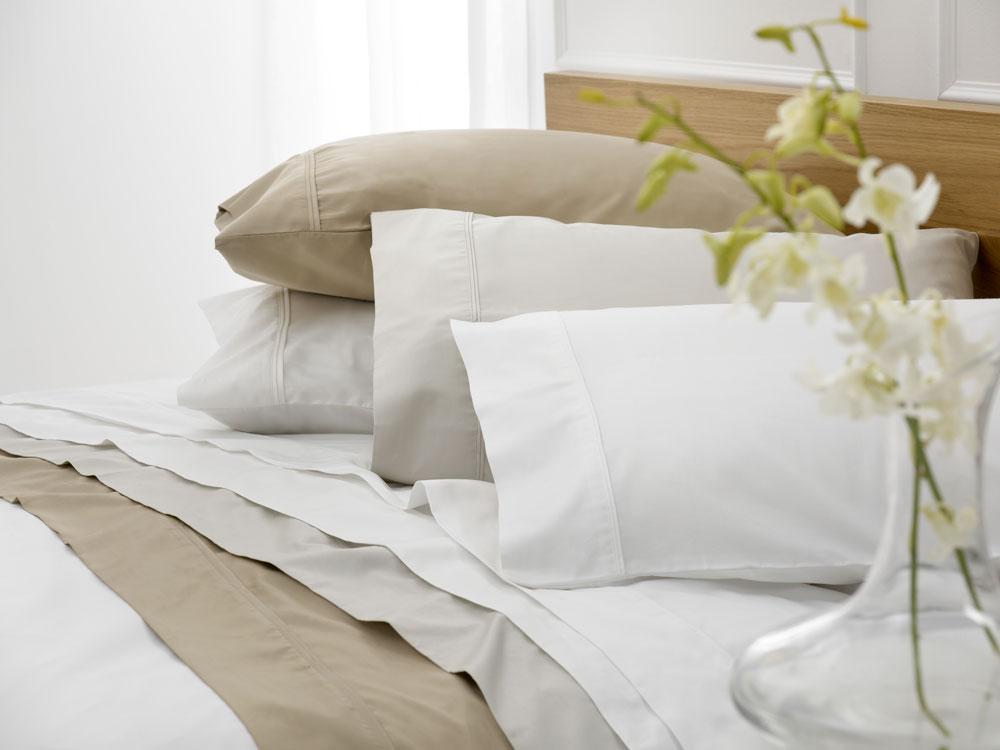
FIBER TYPE
The country of origin is a good starting point when considering quality. European cottons, such as Egyptian and Turkish cotton, are well-known for their fine quality. They are also known for their ethical production methods, as opposed suppliers operating in other continents.
Cotton is the most popular sheeting fabric, although poor quality cotton can pile and become course quickly due to its shorter fibre length. It pays to look for a longer fibre; European-derived cotton is always a safe bet.
Linen and bamboo are both well known for their breathable insulation benefits, keeping you cool during the summer evenings, yet warm in the winter.
We recommend keeping scratchy polyester out of your bed, full stop. As it is a synthetic fibre, it won’t last as long and won’t be as warm or comfortable as other natural fiber options. Polyester or poly/cotton blend bedding is usually cheaper upfront, but you’ll find yourself replacing them much more frequently than good quality cotton or linen.
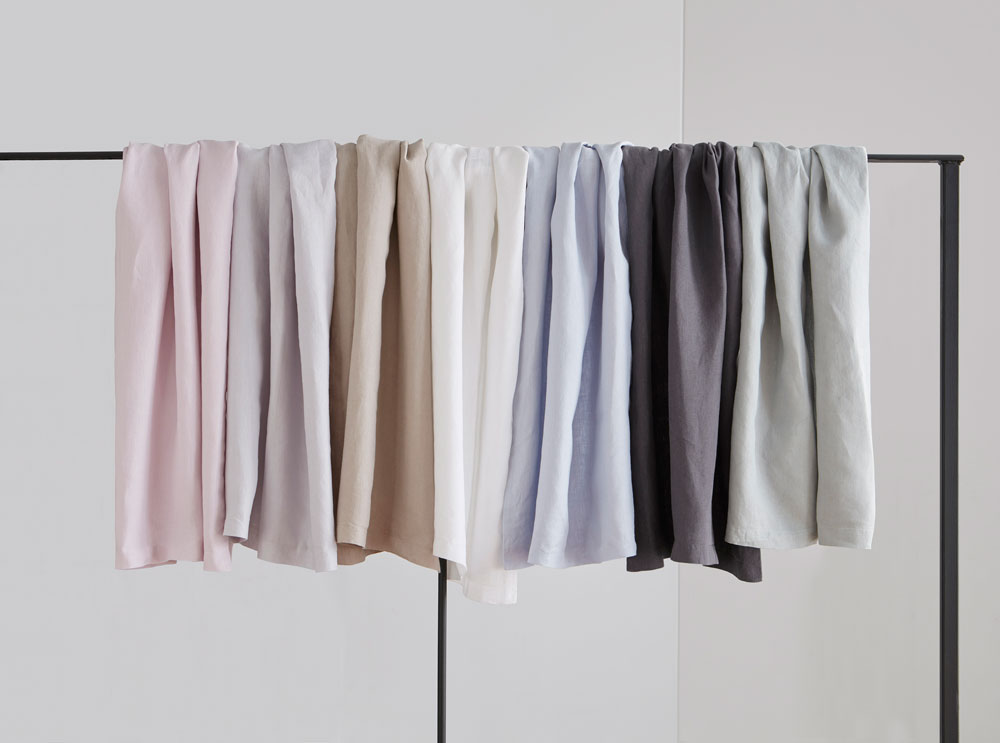
WEAVE
Different types of weaves have different characteristics and, as such, the type of weave used affects the softness and feel of your bed linen. Modern weaving is carried out on sophisticated machines, with a “warp” yarn which is the basis of the cloth and goes on vertically on the machine and “weft” is the horizontal yarn that gives you the type of weave and the design.
PLAIN WEAVE (Percale Weave)
A basic weaving technique utilising a simple alternate interlocking of warp and weft. Percale is a plain-weave fabric whereby the fibers are tightly woven to create a fine texture and finish. The result is a crisper, cooler and more luxurious fabric that feels the same on both sides. Typically a percale weave must have a minimum thread count of 180 so it's a good benchmark for quality bedding. We have a great quality crisp 310 Thread Count Percale Sheet set, which is fantastic value for money.
SATIN WEAVE
Another basic weave when generally the warp is floated over the weft. The yarns are interlocked in such a way that there is no apparent pattern, resulting in a smooth and shiny surface effect. Generally used for applications requiring a sheen.
SATEEN WEAVE
Sateen weaves are the next step up in terms of softness. This is a technique similar to Satin weave, except the weft is floated over the warp to give a more lustrous, smooth and slippery feel.This is a luxurious sensation against the skin and is one of the highest regarded sheeting types. Our 1000 Thread Count Sateen Sheets are our best seller in the bedding category and it is understandable why.
JACQUARD WEAVE
A complex French technique often used on Baksana bedspreads. The warp yarn is manipulated with the weft yarn to create intricate designs in multi directions. This is also one of the main techniques used to make bed linen.
Things to consider when purchasing quality bedding:
- Fiber type and origin of fiber
- Thread count
- Weave type
- Versatility – as good quality bedding lasts a long time we recommend building up neutral and subtle or timeless designs as opposed to seasonable fashion trends. You’ll have more options to mix and match with, keeping your space fresh.
Below are some of our favourite staples to help build up your quality bedding collection. Happy shopping!

